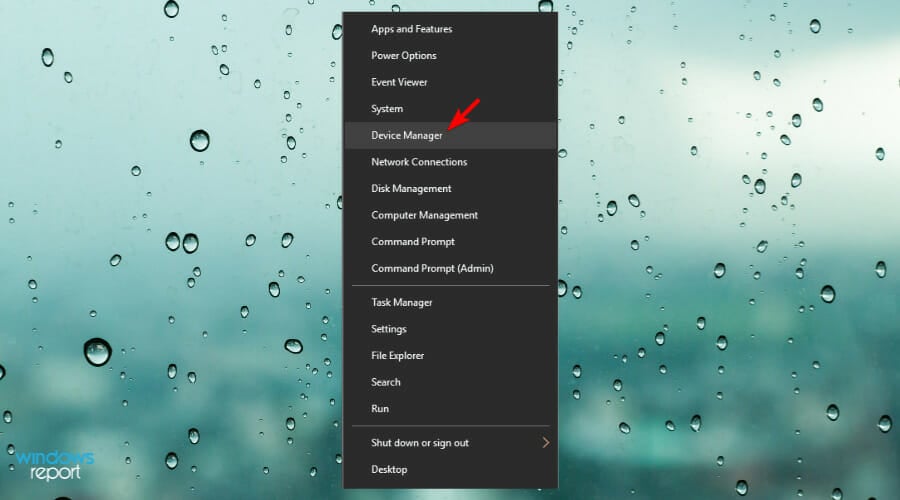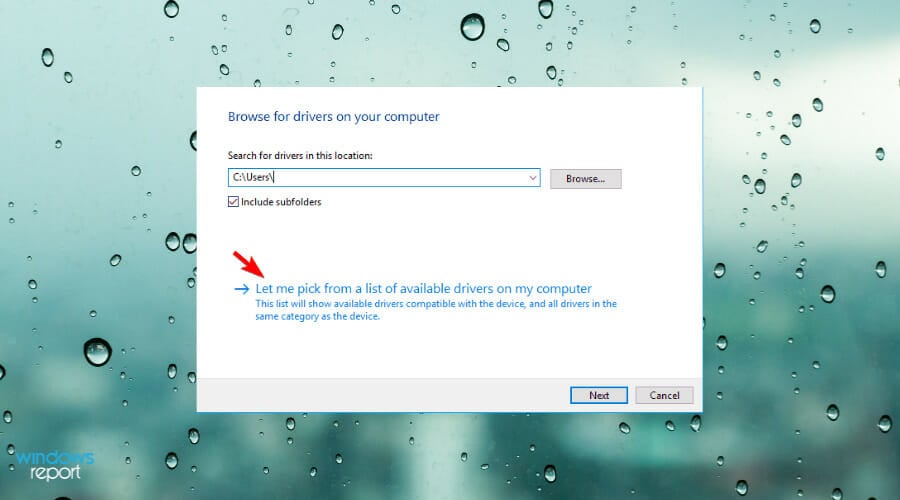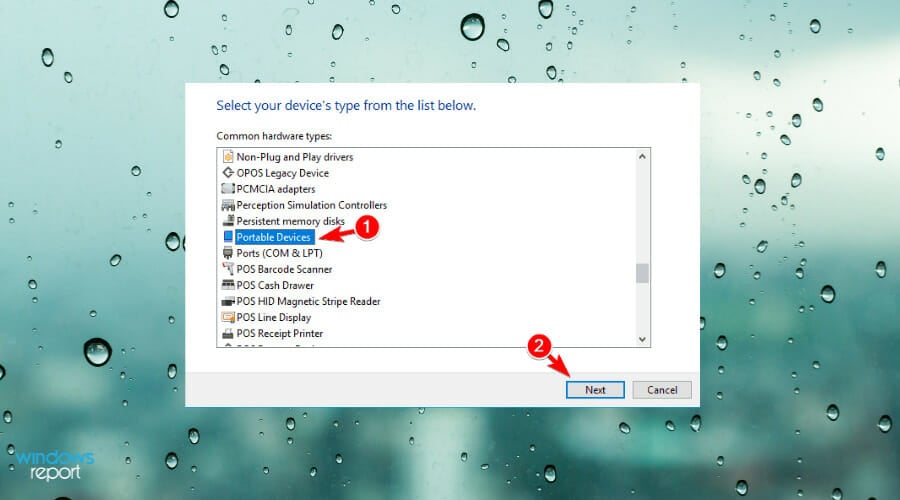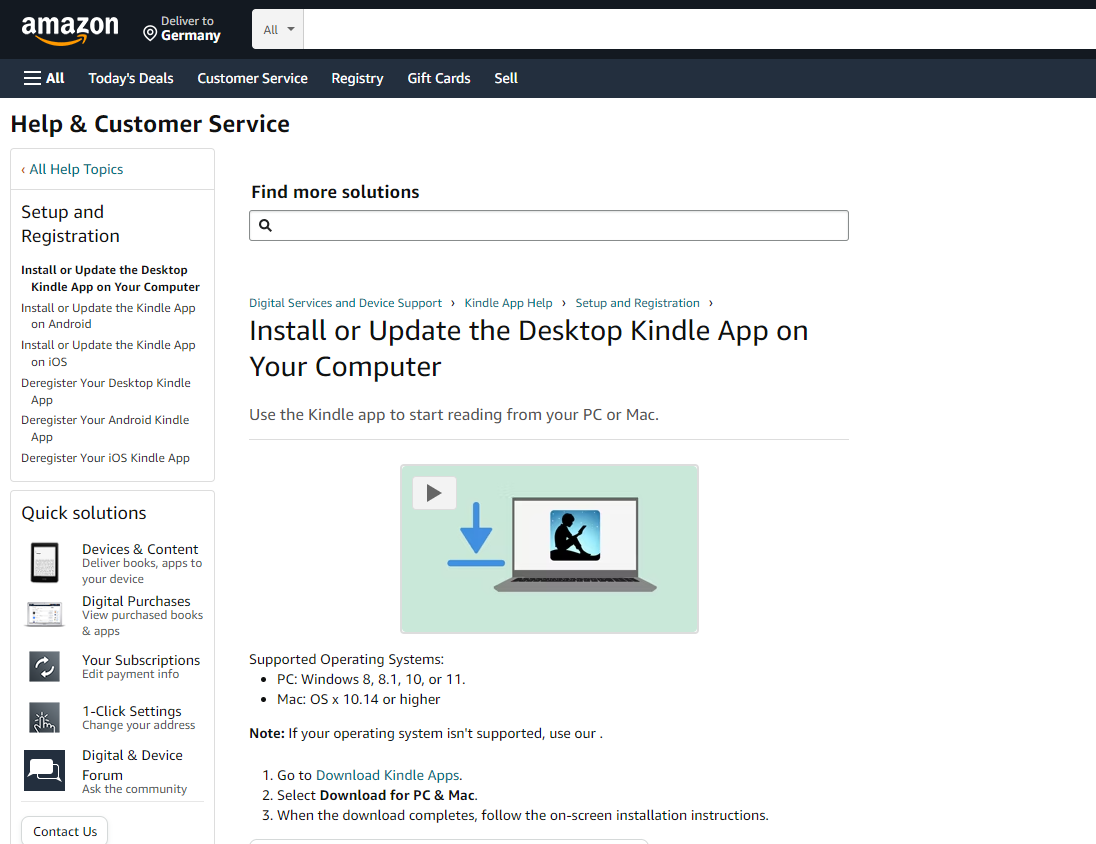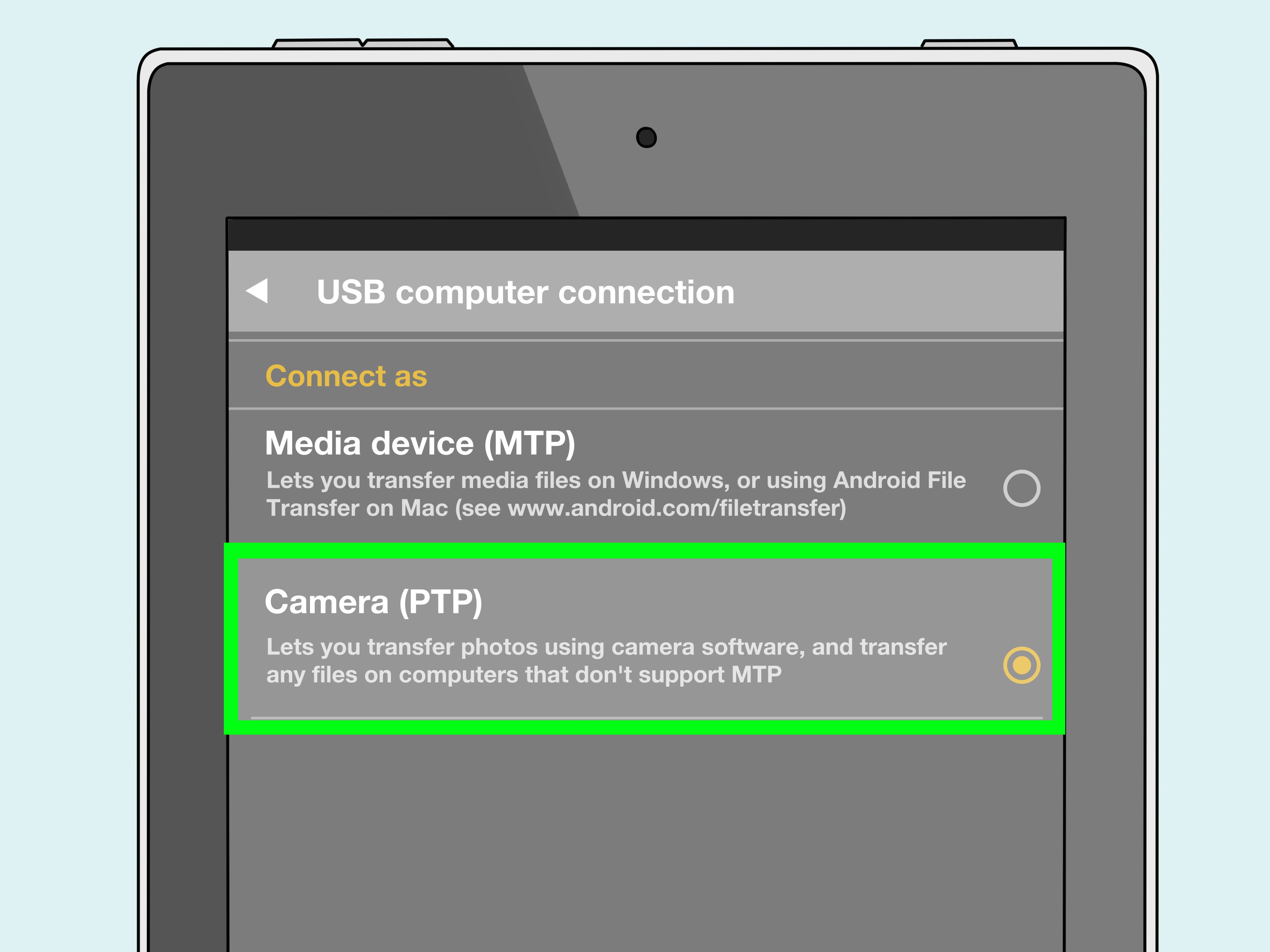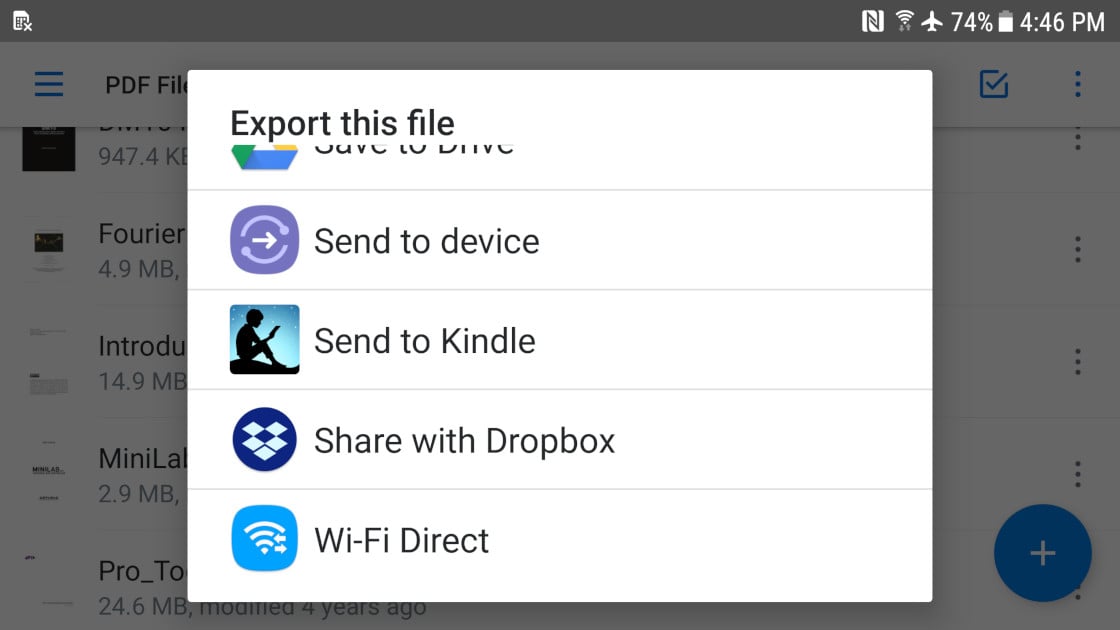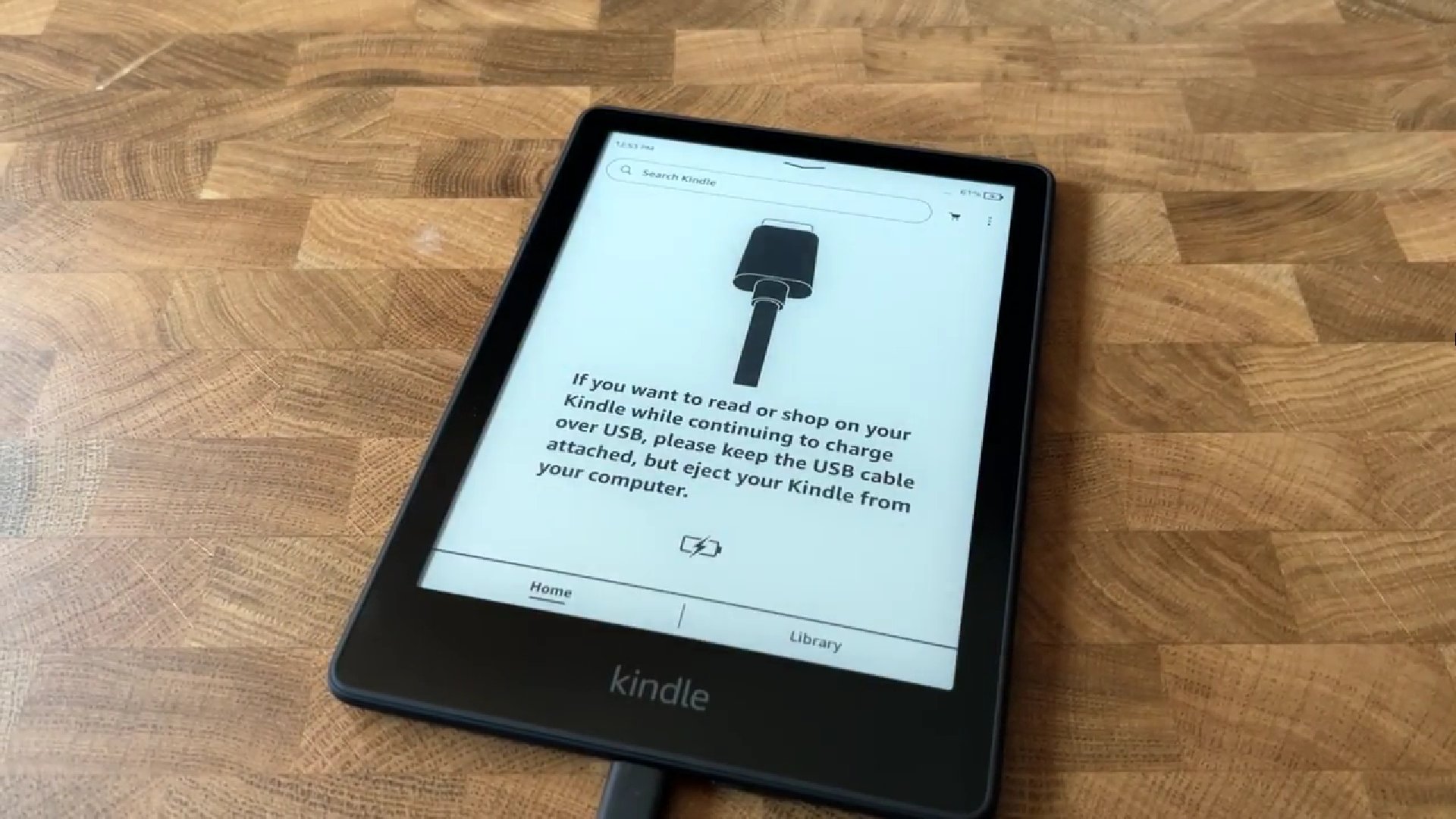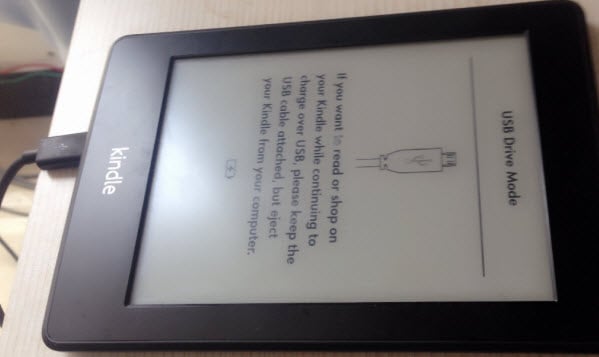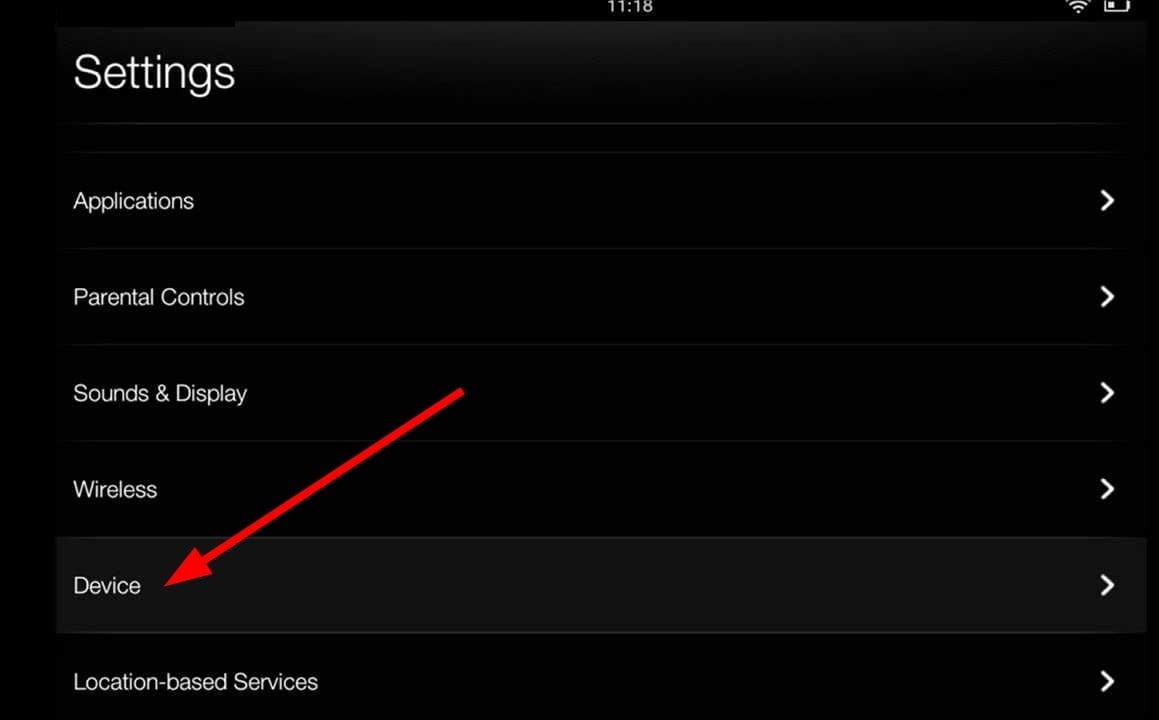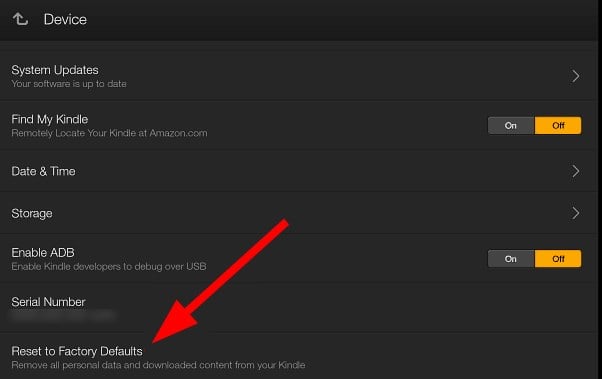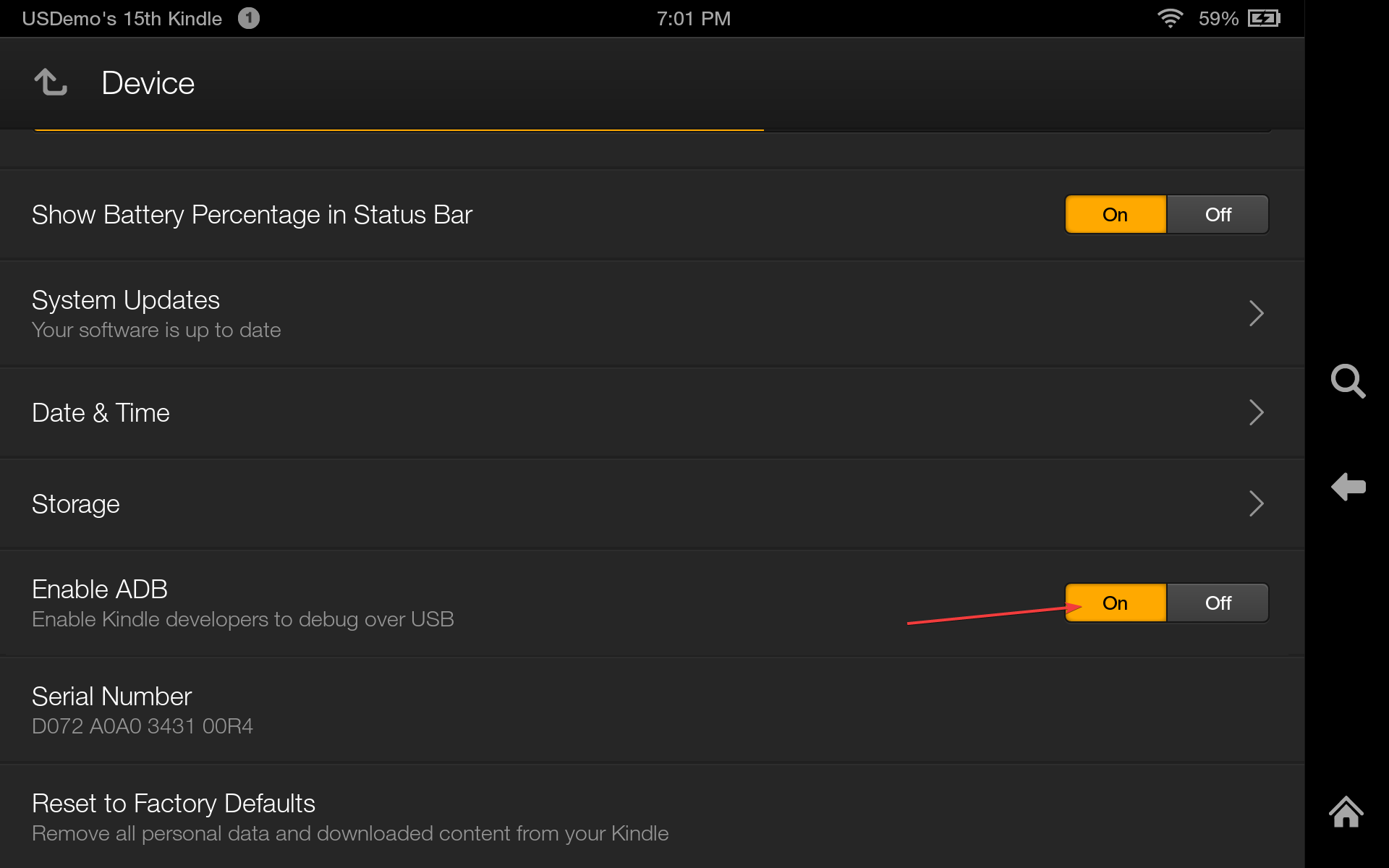Fix: Kindle Fire not Showing up on PC [Full Guide]
How do I get my Kindle to show up on my computer? Here are some effective ways
13 min. read
Updated on
Read our disclosure page to find out how can you help Windows Report sustain the editorial team Read more
Key notes
- Kindle Fire is a popular eBook reader that your computer may not recognize, so we covered this issue for you.
- However, multiple user reports claim that Kindle Fire is not showing up on their Windows PC.
- We have listed several solutions to overcome this issue to help you resolve the problem.

Kindle Fire is a popular tablet made by Amazon, and due to its solid hardware and affordability, the device quickly gained a lot of popularity.
Even though Kindle Fire is a great device, many users reported that their tablet wasn’t recognized by Windows 10 and 11.
In this guide, we will show you a few solutions that will help you resolve and overcome the Kindle Fire not showing in Windows PC issue. Let us get right into it, and note that they also work for the following error variations:
- Kindle Fire files not showing up on PC (documents, photos)
- Kindle Fire USB not showing up on my computer
- Kindle Fire internal storage not showing up on PC
- Kindle Fire 7 not showing up on PC
- Kindle Fire paperwhite not showing up on PC
- Kindle not showing up on PC Windows 10, Windows 11
- Kindle charging but not connecting to PC
- Fire tablet not recognized by PC- Kindle Fire not connecting to PC
Why isn’t my Kindle showing up on my PC?
Here are a few common reasons why Kindle may not show up on your PC.
- Your USB cable is damaged
- There is a problem with your Kindle firmware
- You haven’t installed the latest Kindle update
- Your PC isn’t recognizing Kindle as an MTP device
- There might be some important files missing
- USB controller driver files might be missing
- ADB isn’t enabled on your Kindle
- Kindle charging but not recognized PC
Is the Amazon Fire tablet compatible with Windows 10?
The Amazon Fire tablet is recognized by Windows 10, as it is one of the supported operating systems you can connect the tablet to.
However, if you want to know if your Amazon Fire tablet can use the Windows 10 OS, then this is impossible. This is because the tablet uses an Android OS with no driver chipset supply that can run Windows 10.
How do I get my computer to recognize my Kindle?
1. Install the MTP USB Device Manager
- Press Windows + X to open the Start menu.
- Select Device Manager.
- Click on View and select Show hidden devices option.
- Locate the Kindle Fire in Device Manager.
- Right-click it and choose the Update Driver option.
- Select Browse my computer for driver software.
- Choose Let me pick from a list of available drivers on my computer
- Select Portable Devices and click on Next.
- Uncheck Show compatible hardware option and select MTP USB Device. Click on Next to install the driver.
If a certain device isn’t detected in Windows, it’s most likely that the problem is a missing driver. This issue can occur with smartphones and tablets, and it can easily affect Kindle Fire as well.
To fix the problem, you need to install the missing driver manually.
After installing the MTP driver, your PC will recognize your Kindle Fire and you’ll be able to transfer files without any problems.
Keep in mind that you might have to try different drivers in some cases in order to resolve this problem.
Update drivers automatically
By installing a driver manually you can damage your system when downloading the wrong version. We recommend using professional third-party software that downloads and installs the most suitable drivers.
So you can rely on third-party software PC HelpSoft Driver Updater due to its capability to scan your computer fast and detect automatically driver issues in your system.
⇒ Get PC HelpSoft Driver Updater
2. Download the latest version of the Kindle app
If your Kindle Fire isn’t recognized by Windows 10, it might be due to your Kindle app. Your tablet uses the Kindle app for file transfer, and if this application is outdated you might experience certain issues.
Several users reported that installing the latest version of Kindle for their desktop fixed the problem, so be sure to try that.
Even if you have the latest version of Kindle on your PC, be sure to reinstall it and check if that solves the problem.
3. Set your device to connect as a camera
According to users, you can circumvent this problem by connecting your Kindle Fire as a camera. To do that, simply choose to connect your device as a camera from the pull-down menu after connecting Kindle to the PC.
If you can’t find this option in the pull-down menu, you can select it by going to the Settings > Storage section on your tablet.
Other users claim that you can fix the problem by connecting your Kindle Fire as an MTP or USB device. This option is also available from the Storage section or from the pull-down menu, so be sure to try it out.
Keep in mind that you might have to switch between different options several times before Windows can recognize your device.
This is a relatively common problem with Android devices on Windows, however, this isn’t a permanent solution, so you’ll most likely have to repeat it if the problem occurs again.
4. Transfer your files over a Wi-Fi network
If your PC doesn’t recognize Kindle Fire, you might be able to fix the problem by transferring your files over Wi-Fi. To do that, you need to use Amazon Cloud Drive and File Manager.
Other useful applications that can help you with this problem are Send to Kindle and Wi-Fi Explorer, so you might want to try them as well.
With these apps, you should be able to transfer files to Kindle over your Wi-Fi network. We have to mention that this is just a workaround, but it might be useful if you need to urgently transfer a couple of files.
Keep in mind that the Wi-Fi connection is slower than USB, so it might take you a while to transfer larger files.
5. Try a different cable
If your Kindle Fire is not showing up on Windows, it might be due to your cable. Sometimes your cable might stop working due to damage or some other reason, and if that’s the case you should replace it.
After changing your cable, check if Windows recognizes your Kindle. According to users, they had to try several different USB cables before they found the one that works for them. Some users are also suggesting using a non-Amazon cable, so be sure to try that.
This solution works in most cases, but it might take a bit of trial and error before you find the cable that works for your device.
6. Connect your Kindle to the PC and restart it
According to users, you might be able to fix this problem simply by connecting Kindle with your PC and restarting it a few times. To do that, follow these steps:
- Connect Kindle with the PC.
- While Kindle is connected, restart it.
- If everything is in order, you’ll hear a connection sound. If not, repeat the previous steps a couple of times until you hear the connection sound.
- After hearing the connection sound, enter your PIN code on the Kindle. You might get a message mentioning a low-capacity charger. If so, just ignore the message.
- Now go to This PC and you should be able to find Fire drive next to My Pictures or My Music.
According to users, Kindle is recognized by their PC only if it’s charging at low capacity. There’s probably a bug causing this issue, but it should be fixed in one of the future updates.
7. Turn off both devices and use Calibre to transfer files
According to users, you might be able to circumvent this problem simply by using Calibre to transfer your files. To do that, do the following:
- Turn off your PC and Kindle and disconnect all cables.
- Turn your PC back on again.
- Now open Calibre and connect the Kindle to the PC.
- Turn on the Kindle.
After doing that, the PC should recognize your device and you’ll be able to transfer files without any problems.
8. Connect your device to a different USB port
Many users reported that their Kindle wasn’t recognized when connected to a USB 3.0 port. USB 3.0 standard is relatively new, and some older devices might not have the necessary capabilities to work with it.
If you’re using a USB 3.0 port, try to connect Kindle to the USB 2.0 port instead. Several users reported that using the USB 2.0 port fixed the problem for them, so be sure to try it out.
On the other hand, several users reported that their Kindle was recognized only while connected to a USB 3.0 port.
We have to mention that this solution isn’t always successful, so you might have to repeat it a couple of times before your device is recognized by Windows.
This isn’t a permanent solution so you’ll have to repeat it if the problem reappears.
9. Perform a hard reset
- Double swipe down from the top of your screen to find Quick Settings.
- Tap on Settings.
- Select the Device Option.
- Tap Reset to Factory Defaults.
It’s possible to perform a factory reset of your device in a simple way that will also wipe all your memory data.
Then if other solutions didn’t work out, you can change your focus on your Kindle device and try a system recovery. Using this option, the device may address software troubles responsible for not recognizing your Windows PC.
To do that, press and hold the Power button for about 40 seconds until your Kindle restarts automatically. If your device already restarted automatically, release the power button, and if it didn’t restart you can turn it back on.
You can launch the recovery mode with the Power button and Volume Down button press and hold at the same time.
10. Reinstall your Kindle driver
- Make sure your Kindle is connected to the PC.
- Now navigate to Device Manager.
- Locate Kindle on the list, right-click it and choose Uninstall device.
- A warning message will appear. Click on Uninstall to remove the driver.
- After removing the driver, disconnect the USB cable and reconnect it again.
- Windows will now install the necessary drivers.
After reinstalling the Kindle driver, any problems with Kindle Fire should be fixed.
Sometimes a certain glitch with drivers can cause your device to be unrecognized by Windows 10. However, you can easily fix this problem simply by reinstalling your drivers.
In addition to the Kindle driver, some users are suggesting reinstalling USB Mass Storage Device.
This device is located in the Universal Serial Bus controllers section, but before you can find it you need to reveal hidden devices.
After you remove the driver, you need to disconnect the Kindle and restart both your PC and Kindle. Once both devices restart, connect them and your Kindle will be recognized.
11. Send the file as an email attachment
This is just a workaround, but it can be useful if you need to urgently transfer a few files. According to users, you can send the necessary files to your Kindle as an email attachment in order to circumvent this problem.
This is a simple workaround that might be helpful, but it’s not suitable if you need to transfer larger files.
12. Enter your Kindle PIN code
Many users use PIN codes to protect their devices from unauthorized access. However, sometimes your PIN can cause Kindle to become unrecognized by the PC.
To avoid this problem, be sure to enter your PIN code once you connect Kindle to the PC. After doing that, the device will be recognized and you’ll be able to transfer files without any problems.
13. Try turning your PC on and off while Kindle is connected
Another way to fix this problem is to simply connect the Kindle to the PC and then turn the PC off. After your computer turns off, wait for a few seconds and turn it back on again.
Once your PC turns on, your Kindle should be recognized. This isn’t the most reliable solution, so you might have to repeat it a few times before Windows detects your Kindle.
14. Run the wpdmtp.inf file
- Open File Explorer and go to the C:\WindowsINF directory.
- Locate wpdmtp.inf.
- Right-click it and choose Install from the menu.
After the installation, you should be able to use Kindle with your PC without any problems.
15. Update Kindle firmware
According to users, you might be able to solve this problem by updating Kindle firmware. Firmware update often fixes compatibility issues, and if your Kindle isn’t recognized by Windows 10, a firmware update might fix that.
We have to warn you that firmware update is an advanced procedure, and if you don’t update your firmware properly or if you install a wrong update, you can cause irreversible damage to your Kindle.
If you decide to update your firmware be extra cautious and keep in mind that you’re updating it at your own risk.
16. Enable ADB on your Kindle
On the other hand, some users claim that ADB is the problem, so if you’re using it, try turning it off and check if that solves the problem. After doing that, your PC should be able to recognize Kindle without any problems.
17. Use a USB hub
According to users, you might be able to circumvent this problem simply by using a USB hub. USB hubs are useful if you have multiple USB devices but not enough ports on your PC.
Few users claim that using the USB hub to connect their Kindle to the PC fixes the problem, so you might want to try that as a workaround.
18. Leave your Kindle connected for a few minutes
A couple of users reported they fixed the problem simply by leaving their Kindle connected to the PC.
According to them, the device wasn’t originally recognized, but after leaving it connected for a couple of minutes Windows managed to recognize it.
This is an unusual solution, but you still might want to try it out.
19. Check if your device is on the ignore list in Calibre
According to users, in some cases, your device might be on the ignore list in Calibre and that can prevent Windows from recognizing it.
To fix the problem, you need to open Calibre and check if your Kindle is on the ignore list. If so, be sure to remove it and the problem should be resolved.
How can I fix Kindle Fire if it’s not showing up on Windows 11?
If you are using a Windows 11 PC and Kindle Fire isn’t showing up on it, then you can try the above solutions as they work well on a Windows 11 PC as well.
However, we have a dedicated guide that will help you resolve the Windows 11 not recognizing Kindle Fire issue.
How do I transfer files from my Kindle to my computer?
- Download the Kindle desktop application.
- Install it on your PC.
- Log in with your Amazon account.
- Download books using the cloud.
- Find the books and save them to your local disk. The files will be stored in a special download folder.
Kindle Fire is a great device, but as you can see certain issues with it can occur on Windows 10. If your device isn’t recognized on a Windows 10 PC, be sure to try any of the solutions from this article.

